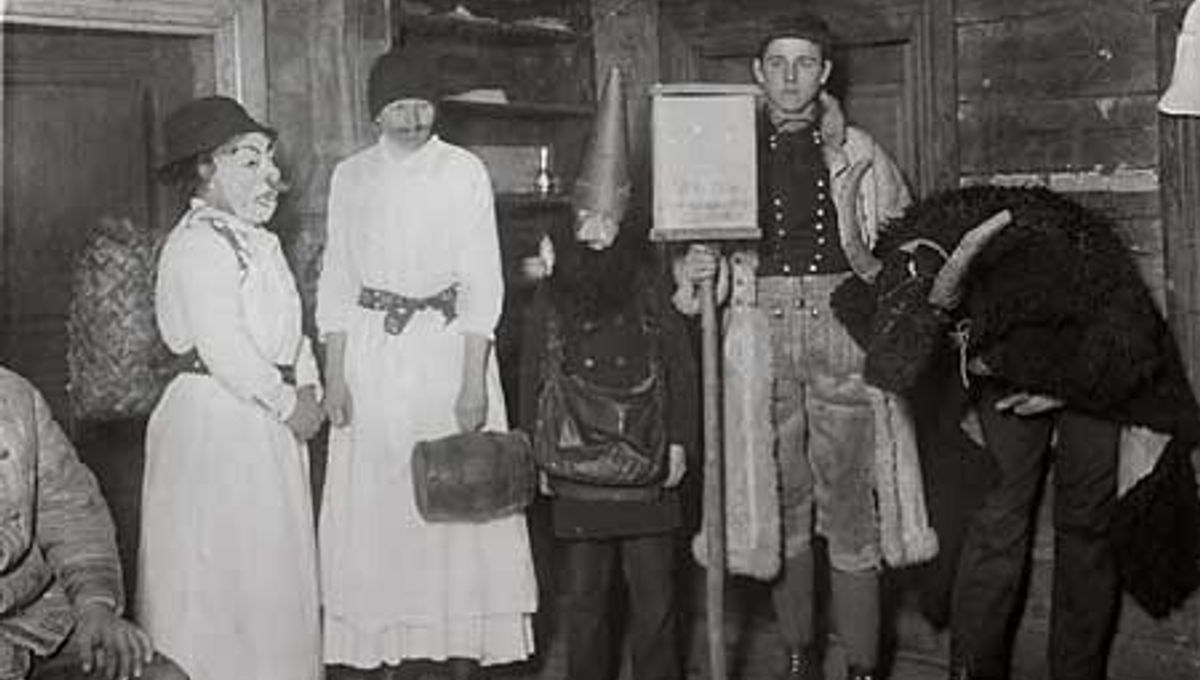
In yet another edition of slightly terrifying Christmas traditions, it’s Julebukking – Norway’s marginally sweeter take on Krampus. Sharing roots in Norse mythology and paganism, both Krampus and Julebukking see a goatly entity visiting your house around Christmas, but the two have quite different intentions.
Similar to trick-or-treating on Halloween, the act of Julebukking sees a group of rapscallions in fancy-dress costumes turn up to your front door demanding treats – or, in the 20th-century versions, alcohol. Usually occurring between Christmas and New Year’s, variations of Julebukking from different communities has led to some rather different activities.
In some variations, the group would carry a goat head door to door, some would sing for their candy, and others would disguise their voice and stick around until you guessed who was under the costume. In at least one variation of Julebukking, whoever answers the door must quickly don their own goat-fit and join the clan on their adventure.
The significance of goat imagery in Julebukking stems from the mythical Norwegian Julebukk, or “Yule buck”, a small gift-bearing creature that looks like a goat. The tale of the Julebukk originated in Viking times when pagans worshipped Thor, whose chariot was pulled by the two goats Tanngrisnir and Tanngnjóstr.
During pagan celebrations, the Julebukk, someone dressed in goat skin and carrying a goat head, would enter the party and at some point in the evening pretend to be sacrificed and “die”, before returning back to life after Thor revived them.
As Christianity became more prolific across Europe, the Julebukk goat gradually began to take the form of the devil and was quickly forbidden by the church. In response, the slightly more jovial Julebukking tradition was formed.
When Julebukking was introduced to the US by Norwegian and German immigrants, it was further influenced by Christianity, with singing in exchange for alcohol becoming the most prominent form of celebration. The 1930s and 1940s, however, saw many communities abandon the alcohol-led festivities due to a culmination of increased mobility, fears of strangers, and decreased access to alcohol due to prohibition.
While the tradition has mostly disappeared from Norway, there are still a number of communities in the US that claim to still celebrate Julebukking. In some rural Midwestern towns, with large Scandinavian populations, they proudly keep the spirit of the Julebukk alive today.
Source Link: Julebukking: Trick-Or-Treating Is Not Just For Halloween